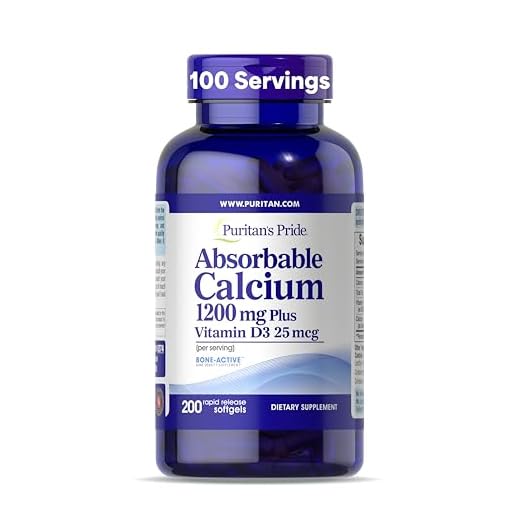







Vitamin D is essential for bone health because it enhances calcium absorption in your intestines. When you don't get enough Vitamin D, your body struggles to absorb calcium, leading to decreased bone mineral density and higher fracture risk. Deficiency can result in osteoporosis and rickets, especially if your serum levels fall below 25 nmol/L. Maintaining levels above 80 nmol/L is key for sustaining strong bones. For ideal bone health, aim for adequate sunlight, dietary sources, and possibly supplements. Understanding the details of Vitamin D's role can empower you to make informed decisions about your bone health.
Key Takeaways
- Vitamin D enhances calcium absorption in the intestines, crucial for maintaining strong bones and preventing deficiencies.
- A deficiency in Vitamin D can lead to osteoporosis and rickets, impacting overall bone health.
- Maintaining serum 25-hydroxyvitamin D levels above 80 nmol/L is essential for optimal bone density and reducing fracture risk.
- Adequate Vitamin D intake, combined with calcium, significantly lowers the risk of bone loss in older adults.
- Regular testing of Vitamin D levels helps inform supplementation needs and supports long-term bone health.
Understanding Vitamin D
Vitamin D plays an essential role in your bone health, primarily by facilitating calcium absorption in the intestines. Without adequate Vitamin D, your body struggles to absorb the calcium necessary for maintaining strong bones, which can lead to conditions like osteoporosis and rickets. Sun exposure offers a natural way to synthesize Vitamin D, with just 10-15 minutes of UVB exposure being effective. However, many people don't get enough sunlight, making dietary sources important.
Unfortunately, the sources of Vitamin D are limited. Fatty fish such as salmon and mackerel provide some, but fortified foods and supplements are often necessary for those with insufficient sun exposure. It's important to recognize that Vitamin D deficiency is defined as serum 25[OH]D3 levels below 25 nmol/L. This deficiency can greatly decrease bone mineral density, increasing your risk of fractures.
While ideal Vitamin D levels remain debated, some studies suggest aiming for levels above 80 nmol/L to maximize bone health. Consequently, considering your Vitamin D levels and incorporating supplements or fortified foods into your diet can essential steps in safeguarding your bone health.
Historical Significance of Vitamin D
The historical significance of vitamin D can't be overstated, particularly as it relates to the prevention of rickets in the early 20th century. Rising urbanization and decreased outdoor activity led to a dramatic increase in rickets cases, prompting researchers to link cod liver oil—rich in vitamin D—to the prevention of this debilitating disease. This discovery marked a turning point in health care, as vitamin D was identified as essential for bone health and development. The nutritional benefits of cod liver oil further reinforced its importance in promoting overall wellness.
Seasonal and geographical variations in sunlight exposure also highlighted the importance of adequate sunlight for vitamin D synthesis. To combat widespread deficiency, public health initiatives introduced fortified foods, such as milk fortified with vitamin D, in the early 1900s. This was an important measure to protect against rickets and promote overall bone health.
While vitamin D is vital for calcium absorption, it's worth noting that excessive intake can lead to vitamin D toxicity, underlining the need for balanced consumption. The National Institutes of Health emphasizes the necessity of both food sources and sunlight exposure to maintain optimal vitamin D levels, ensuring the well-being of populations historically affected by deficiency.
Current Vitamin D Recommendations
Understanding current vitamin D recommendations is essential for maintaining ideal bone health. The Recommended Daily Allowance (RDA) for vitamin D is 600 IU/day for individuals aged 1-70, which includes pregnant and breastfeeding women. However, if you're over 70, the RDA increases to 800 IU/day to support bone health effectively. This increase acknowledges that older adults often face higher osteoporosis risk due to decreased calcium absorption. Additionally, its numerous health benefits make vitamin D a vital nutrient, particularly for those at risk of deficiency.
Experts argue that these current vitamin D recommendations may still be inadequate, particularly for older adults who are more susceptible to bone density loss. To combat this, vitamin D supplementation is especially suggested for those with low levels, including individuals over 50 or those with limited sunlight exposure.
While the maximum safe limit for vitamin D intake is set at 4,000 IU/day for individuals aged 9 and older, and between 2,500-3,000 IU for children aged 1-8, it's important to tailor your intake based on your specific needs and circumstances. By staying informed about these recommended intakes, you can make better decisions to enhance your bone health and reduce your risk of osteoporosis.
Sources of Vitamin D
How can you guarantee you're getting enough vitamin D for ideal bone health? The primary source of vitamin D is sunlight exposure; just 10-15 minutes of UVB radiation during summer can convert 7-dehydrocholesterol in your skin to pre-vitamin D3. However, relying solely on the sun isn't always feasible, especially in winter or northern regions. To make certain you are obtaining adequate levels, it is vital to evaluate your personal needs and consider individual recommendations based on factors like age and health.
You should also consider dietary sources of vitamin D. Fatty fish like salmon, tuna, and mackerel, as well as beef liver, cheese, and egg yolks, offer limited amounts. To enhance your intake, look for fortified foods such as milk, breakfast cereals, and some orange juices, which provide additional vitamin D options.
For those who struggle to meet their vitamin D needs through sunlight and food, vitamin D supplements can be a practical solution. Vitamin D2 (ergocalciferol) from plants and the more effective vitamin D3 (cholecalciferol) from animal products are both available. Supplementation is particularly recommended for individuals at risk of deficiency, such as infants on breast milk. By making certain a combination of these sources of vitamin D, you can support your bone health effectively.
Vitamin D Metabolism
After ensuring you get enough vitamin D through sunlight, diet, or supplements, it's important to grasp how your body processes this essential nutrient. Vitamin D metabolism begins when UVB radiation converts 7-dehydrocholesterol in your skin to pre-vitamin D3. This is then hydroxylated in the liver to produce 25-hydroxyvitamin D [25(OH)D3], the primary circulating form of vitamin D.
The active form, 1,25 di-hydroxyvitamin D3 (calcitriol), is generated in your kidneys through the enzyme 1α-hydroxylase, regulated by parathyroid hormone (PTH) and fibroblast growth factor (FGF-23). Serum levels of 25(OH)D3 are essential for evaluating your vitamin D status. Deficiency is defined as levels below 25 nmol/L and insufficiency below 50 nmol/L, both linked to increased bone loss and fracture risk.
Experts suggest ideal vitamin D status for bone health may require serum levels above 80 nmol/L, or even 100-200 nmol/L, to effectively support calcium absorption and bone mineralization. Additionally, vitamin D binding protein (DBP) plays a critical role in transporting vitamin D metabolites, influencing their availability and impact on your bone health.
Impact on Bone Density
Maintaining adequate vitamin D levels is essential for preserving bone density, especially as you age. Vitamin D plays an important role in calcium absorption, which directly affects your bone mineral density (BMD). When you have insufficient vitamin D, your body struggles to absorb calcium effectively, leading to lower BMD and an increased fracture risk.
Research shows that higher vitamin D intake, specifically around 700-800 IU per day, can decrease the risk of hip and non-vertebral fractures by about 25%. This is particularly important for older people, who are more susceptible to vitamin D deficiency. If your serum 25-hydroxyvitamin D levels fall below 25 nmol/L, you're likely to experience greater bone loss and a higher incidence of fractures.
To promote ideal bone health, aim to maintain vitamin D levels above 80 nmol/L. Doing so is critical for achieving and sustaining peak bone mass throughout your life. By prioritizing vitamin D intake, you're taking proactive steps to enhance your bone density and overall skeletal health, which becomes increasingly important as you grow older.
Reducing Fracture Risk
Fractures can notably impact your quality of life, particularly as you age. Maintaining ideal Vitamin D levels is essential for reducing fracture risk. Research shows that Vitamin D supplementation can greatly decrease the incidence of fractures. For instance, daily doses of 700-800 IU can lead to a 25% reduction in hip and non-vertebral fractures. Even a single high dose of 100,000 IU of Vitamin D3 has been linked to a 33% lower fracture rate, underscoring its effectiveness in fracture prevention.
Combining Vitamin D with calcium intake above 700 mg/day is vital, especially for older adults who are at higher risk for osteoporosis. Meta-analyses reveal that adequate Vitamin D levels can dramatically lower fracture risk in postmenopausal women, a group particularly vulnerable to bone health issues. Conversely, low levels of Vitamin D are associated with increased bone loss and a heightened risk of fractures.
To protect your bone health and enhance your quality of life, consider monitoring your Vitamin D levels and incorporating appropriate supplementation and calcium intake into your routine. Prioritizing these steps can help you maintain stronger bones and reduce your risk of fractures as you age.
Role in Muscle Health
Vitamin D plays an important role in muscle health, influencing both strength and function. Research shows that vitamin D deficiency is linked to muscle weakness and an increased fall risk, primarily because it supports the expression of vitamin D receptors in skeletal muscle. These receptors are essential for ideal muscle function.
Supplementation of vitamin D may enhance muscle protein synthesis and increase type 2 muscle fibers, which are critical for strength and mobility. Maintaining adequate vitamin D levels—ideally between 40-90 nmol/L—can greatly improve musculoskeletal function. Trials indicate that vitamin D supplementation can reduce fall risk, especially when combined with calcium; however, results can vary across different demographics.
It's important to recognize that some populations, such as African-American females, may exhibit lower response rates to supplementation, highlighting the need for tailored interventions. By focusing on personalized vitamin D strategies, you can better support your muscle health and overall well-being. Understanding your body's specific needs regarding vitamin D can empower you to make informed choices for maintaining strength, function, and reducing fall risk as you age.
Special Considerations for Children
Making sure your child gets enough vitamin D is fundamental for building strong bones and preventing future health issues. During significant growth years, vitamin D plays an important role in facilitating calcium absorption, which is necessary for healthy bone development. For children aged 0-12 months, a daily intake of 400 IU is recommended, while those aged 1-18 years should aim for 600 IU to support ideal bone health.
Unfortunately, many children today face the risk of vitamin D deficiency due to modern lifestyles that limit outdoor play and increase screen time. Insufficient levels can lead to serious conditions like rickets, causing weak and soft bones that elevate the risk of deformities and fractures.
To combat this deficiency, parents should consider dietary sources of vitamin D, such as fortified foods and fatty fish, along with safe sun exposure. Additionally, healthcare providers may recommend vitamin D supplements, especially for children with limited sun exposure or inadequate dietary intake. Monitoring your child's vitamin D levels through regular check-ups can help guarantee they maintain the health necessary for strong bones during their formative years.
Testing Vitamin D Levels
Recognizing the significance of maintaining adequate vitamin D levels in children naturally leads to the question of how to accurately assess those levels. Testing typically involves measuring serum 25-hydroxyvitamin D [25(OH)D3], the primary circulating form of vitamin D that reflects your overall status. A vitamin D deficiency is defined as having serum 25(OH)D3 levels below 25 nmol/L, while insufficiency occurs at levels below 50 nmol/L.
Blood tests are especially recommended for individuals at risk of deficiency, including those with limited sun exposure, darker skin, or certain health conditions that impair absorption. The ideal vitamin D levels for bone health remain a topic of debate, with some experts suggesting values greater than 80 nmol/L or even 100-200 nmol/L to promote overall well-being.
Regular monitoring of vitamin D levels is essential, as it informs supplementation decisions. Populations such as the elderly or those with chronic health issues may need tailored approaches to guarantee they maintain sufficient levels, consequently mitigating the risks associated with deficiency and supporting long-term bone health.
Conclusion
In the delicate balance of bone health, vitamin D stands as both protector and catalyst. While inadequate levels can lead to weakness and fractures, adequate intake bolsters your bones and supports muscle function. As you navigate your dietary choices and sun exposure, remember the importance of maintaining ideal vitamin D levels. This essential nutrient not only fortifies your skeletal structure but also enhances your overall well-being, proving that a small element can make a monumental difference in your health.






